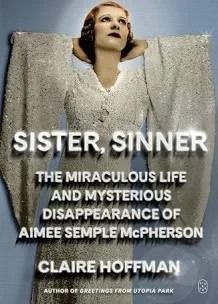5 HOT BOOKS: Climate Change in the Supreme Court, a "Fallen Woman," and More
/1. The Rule of Five: Making Climate History at the Supreme Court by Richard J. Lazarus (Belknap Press: An Imprint of Harvard University Press)
Harvard Law School professor Lazarus details the dynamics of a single case involving the regulation of greenhouse gas emissions in what he deems the Supreme Court’s “most significant environmental decision ever.” Drawing on his years teaching environmental and natural resources law as well as his own experience before the court, Lazarus tells the story of how a lawyer for a tiny environmental group took on the EPA, urging the regulation of carbon dioxide emissions under the Clean Air Act. The environmentalists’ smartly conceived and managed arguments in Massachusetts v. Environmental Protection Agency prevailed in a 5-4 high court ruling in 2007. In addition to his deep understanding of the legal and environmental issues, Lazarus ably captures the internal dynamics of the Court, recounting how Justice John Paul Stevens wrote the majority opinion in a way that won Justice Anthony Kennedy’s pivotal vote.
2. Thinking Inside the Box: Adventures with Crosswords and the Puzzling People Who Can’t Live Without Them by Adrienne Raphel (Penguin Press)
From its origin in 1913 in the New York World’s weekly color supplement “Fun” to a crossword-themed ocean crossing aboard the Queen Mary 2, Raphel investigates the crossword puzzle “from all sides.” She is a congenial, engaging tour guide through this engrossing world, which started with a diamond-shaped pattern with a doughnut hole at its center, and evolved from novelty to ritual. Raphel, who spent her childhood doing – and creating – puzzles, is a poet with a gift for language who makes a compelling argument that in the chaos of life, “solving a crossword puzzle gives you a sense of control: seeing where the letters lead you sets the mind free.”
3. Free Thinker: Sex, Suffrage, and the Extraordinary Life of Helen Hamilton Gardener by Kimberly A. Hamlin (W.W. Norton)
In her fascinating biography, Hamlin recovers a “fallen woman,” a school principal in Ohio ruined after a newspaper revealed her affair with a married man who happened to be superintendent. She reinvented herself, taking her lover’s grandmothers’ maiden names, Hamilton and Gardener; allied with “freethinker” Robert Ingersoll, known as “the great agnostic,” and became a public speaker, writer, and activist. Gardener challenged the idea that women’s brains were different from men’s, campaigned to raise the age of sexual consent to 18, and became an influential suffragist, playing a critical role in the passage of the 19th Amendment. Hamlin not only provides Helen Hamilton Gardener her place in history but also dramatizes the dynamics of the fight for suffrage.
4. The City We Became by N.K. Jemisin (Orbit)
From the cult favorite author of the Broken Earth novels, The City We Became is intended to be the first in a series by the three-time Hugo Award winner whose artful prose fuses science, fiction, and fantasy into a mythological mashup that tackles the issues of urban gentrification and conflict in the city. With a dynamic, multicultural cast, Jemisin’s novel features avatars for each of New York City’s boroughs who band together to battle the “woman in white,” which is an apt metaphor for the white supremacy overtaking the nation, in Jemisin’s brilliantly reimagined struggle for power in an iconic American city.
5. The Everlasting by Katy Simpson Smith (Harper)
This absorbing novel curves backward through centuries, from contemporary Rome to the Eternal City of 165. Smith, a talented historian and deft fiction writer, tells of violative love, iterations of faith, and echoes of freedom through a quartet of characters: a biologist father, a mixed-race princess, a 60-year-old monk, and a girl who defies her tormentors and worships Christ rather than pagan gods. Smith ingeniously hooks these narratives together with a relic that morphs over time, so The Everlasting becomes a symphonic and timeless story.










